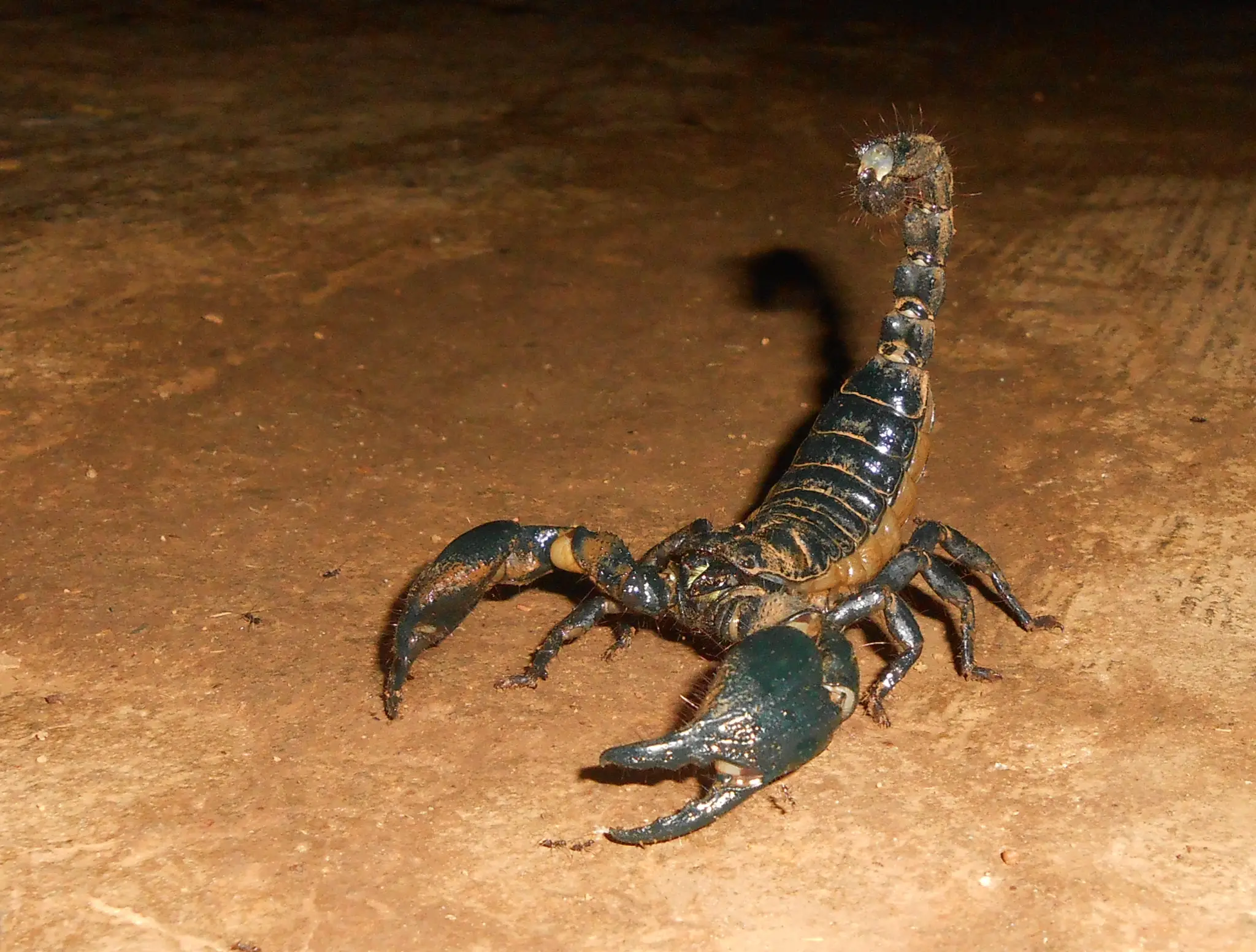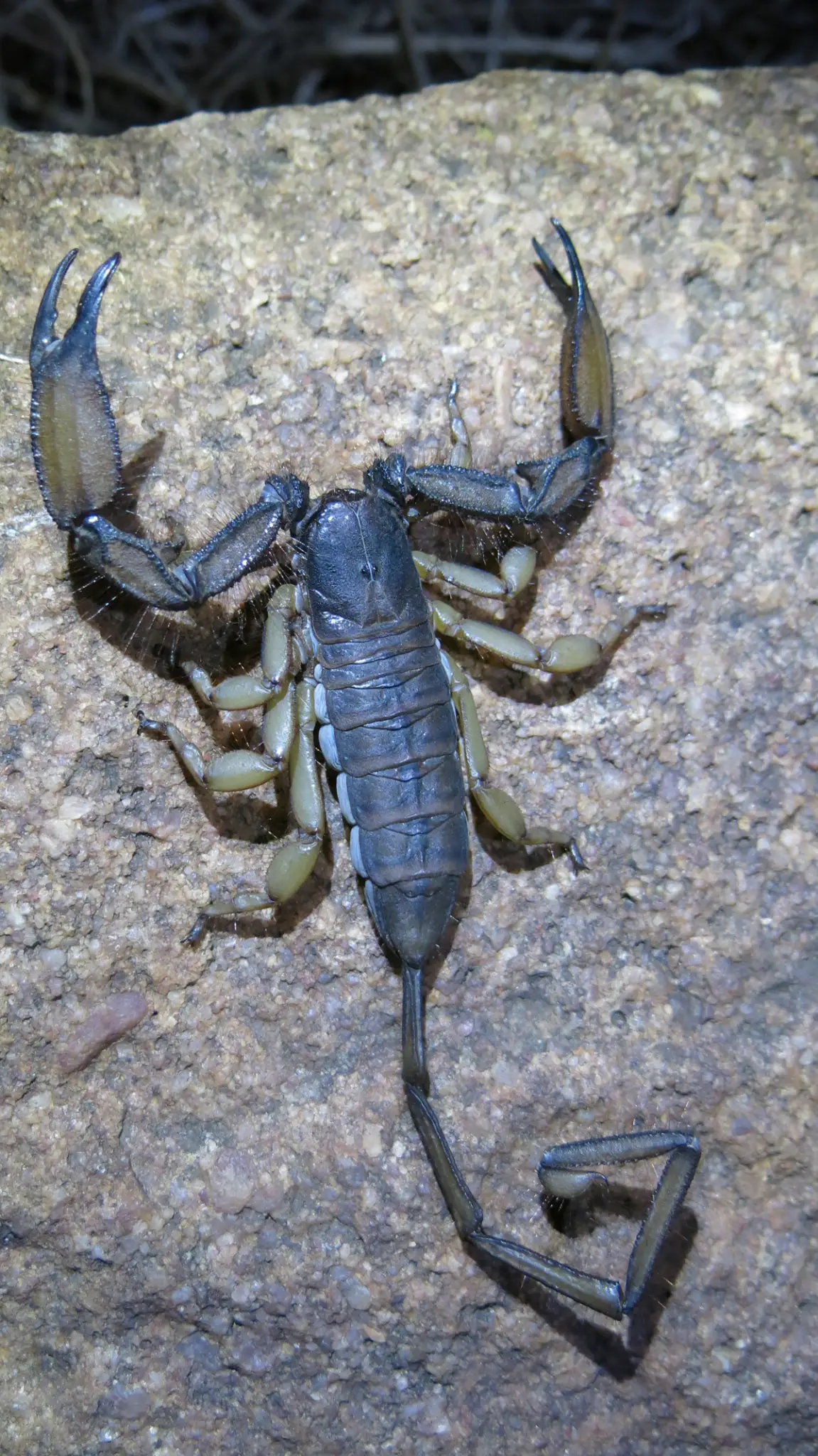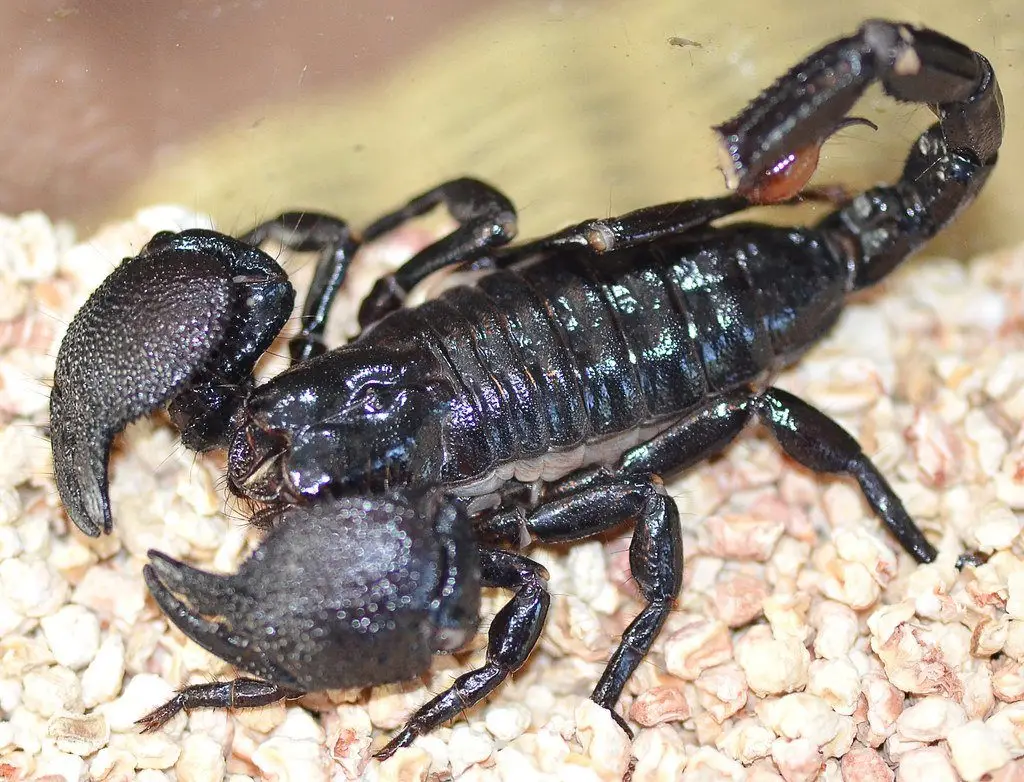What is the biggest scorpion?
Scorpions are easily recognized by their well-known shape, which has pincers at the front and a curving tail with a stinger at the rear. In addition to their pincers, they have eight legs, which places them in the class Arachnida. With almost 2,000 species, scorpions are widely spread throughout the world and can be found on all continents with the exception of Antarctica. Despite being a remarkably adaptable species that can survive in most settings, scorpions still prefer the desert as their natural habitat. But what is the biggest scorpion? To know in detail about the world’s largest scorpion continue reading!
The World’s Biggest Scorpions:
The world’s biggest scorpions are distinguished by their body lengths and weights:
World’s Biggest Scorpions By Body Length:
World’s Biggest Scorpions By Body Weight: The Giant Forest Scorpion (56 inches) and Emperor Scorpion (30 inches) are the two heaviest scorpions on Earth.
The Heterometrus species is longer than the Pandinus species, however, both have strong bodies and appendages. As a result, with an average length of 9 inches, Heterometrus swammerdami (Giant Forest Scorpion) is the longest and heaviest species and is known as the biggest scorpion on earth. The two biggest species of scorpions in the world are emperor scorpions and giant forest scorpions.
Giant Forest Scorpion:

Image credit @ Wikimedia
The Giant Forest Scorpion, also known as Heterometrus swammerdami, is the biggest species of scorpion in the world, measuring 23 cm (9 inches) in length and weighing up to 56 grams (2.0 oz).
Appearance:
The body is a uniform shade of reddish-brown to reddish-black. Juveniles often have a yellow telson and are reddish in color. The pectinal teeth range from 16 to 20. Chela is substantially lobiform. Manus lacks true carinae but is entirely covered with large, rounded granulae. A prominent internal tubercle is absent from the pedipalp patella. Disc-shaped smooth carapace with granulated margins and posterior part. Telson bulbous, and the vesicle longer than aculeus.
Habitat and Behavior:
Most of these scorpions are found in Southeast Asia, mainly in Thailand, Cambodia, and Laos in damp, vegetated regions that are primarily forested and have tropical to subtropical climates. They are nocturnal animals that hide in burrows, leaf litter, and behind logs. Heterometrus swammerdami subspecies are found in Sri Lanka and India. Its venom is typically not dangerous to humans because it has evolved to kill its prey by crushing it with its pincers instead of venom.
Rock Scorpion:

Image credit @ Wikimedia
The Hadogenes troglodytes, sometimes called the Gunning’s rock scorpion, South African rock scorpion, or flat rock scorpion is frequently being sold as an exotic pet. It once held the record for the largest scorpion body length recorded, measuring up to 8.3 inches. Rocks are the only surfaces where lithophilic (“stone-loving”) species, like the flat rock scorpion, could be found. Appearance:
They have strong, spine-like setae that work together with sharply curved claws to give the legs a firm grip on rock surfaces. They are capable of rapid surface movement at any angle, including upside down. The legs and chela are light to pale yellow, while the carapace, pedipalps, and metasoma are entirely black. In comparison to scorpion species of similar size, the metasoma and stinger are rather small.
Habitat and Behavior:
Hadogenes troglodytes are a variable species, but they all live in bushveld, drier regions with less than 600mm of annual rainfall. They can only live in places where a particular type of rock will split and form cracks for them to reside in. Flat rock scorpions are extremely reclusive and are unlikely to be observed unless their hiding location is disturbed. This type of scorpion often stings only as a last defense and tries to escape before fighting back.
Emperor Scorpion:

Image credit @ Shopify
One of the most submissive scorpions in captivity is the Pandinus imperator (Emperor Scorpion). It has a lifespan of 6 to 8 years and is one of the biggest scorpions in the world. These black scorpions, rather than their formidable look and large size, are resilient, quiet, and simple to care for. They have a striking appearance and are considerably easier to handle than the majority of their relatives.
Appearance:
Emperor scorpions are often glossy black, although they can also be dark brown to green. They occasionally glow blue because they reflect UV light rays. They have red-colored claws and stingers. With each succeeding molt, its color becomes darker. The large pincers have a granular texture and are blackish-red in color.
Habitat and Behavior:
Emperor scorpions are found in West African rainforests. They are among the world’s biggest scorpions! These scorpions are terrestrial and active in the late hours of the day. All scorpions have a venomous stinger at the end of their tails, but adults often use their large claws, called palps, to capture food.
Ten World’s Biggest Scorpios:
With an average length of 6 cm (2 inches ), scorpions are typically quite small. However, there are a few species that stand out and are much larger than the average.
Rank | Name | Scientific Name | Size (inches) | Weight (grams) | Habitat |
10 | Deathstalkers | Leiurus quinquestriatus | 3.1-4.3 | 1.0 – 2.5 | Scrubland and desert habitats ranging from North Africa through to the Middle East |
9 | Florida bark scorpion | Centruroides gracilis | 2.0-5.9 | —- | Central and South America |
8 | Vietnam forest scorpion | Heterometrus laoticus | 4.7 | 110 | Peaty areas of Vietnam and Laos |
7 | Tanzanian Red Clawed Scorpion | Pandinus cavimanus | 3.5-5.0 | —- | Rainforests of Tanzanian, Africa |
6 | Transvaal Fat-Tailed Scorpion | Parabuthus transvaalicus | 1.6 – 5.5 | — | South Africa, Zimbabwe, Swaziland, Mozambique and Botswana |
5 | Malaysian forest scorpion | Heterometrus spinifer | 3.9 – 4.7 | — | Southeast Asia including Malaysia, Thailand, Cambodia, and Vietnam |
4 | Giant Hairy Scorpion | Hadrurus arizonensis | 4 – 7 | 5.0 | Throughout the Sonoran and Mohave deserts |
3 | Emperor scorpion | Pandinus imperator | 7.0 | 30 | In the rainforests of West Africa |
2 | Rock Scorpion | Hadogenes troglodytes | 8.3 | Around 30 | Africa including Botswana, Mozambique, South Africa, Zimbabwe |
1 | Giant Forest Scorpion | Heterometrus swammerdami | 9.0 | 56 (2.0 oz) | The tropical rainforests of India and Sri Lanka |
What is the World’s Biggest Sea Scorpion:
The “pterygotid eurypterids”, which had total lengths of above 8 feet (2.5 meters), were the biggest arthropods ever to survive. The biggest ones have been discovered in Germany, the Czech Republic, and New York State in the United States.
Conclusion:
Scorpions are small compared to their marine arthropod relatives, such as crabs and lobsters. the average size of terrestrial arthropods, however, is relatively large at 6 cm. Scorpions don’t show many sexual distinctions, however, males often have longer tails and are more slender than females. Some scorpions can reach up to 9 inches (23 cm). The giant forest scorpion is the biggest scorpion on the earth. Hopefully, readers will find this post about What is the biggest scorpion.
FAQs:
How big is the deadliest scorpion?
Deathstalkers (Leiurus quinquestriatus), which can grow up to 110 mm in length, can be found in arid areas of North Africa and the Middle East, where they reside under rocks.
Can a dead scorpion still sting you?
Occasionally, scorpions may “play possum” or seem to be dead. When owners try to pick them up, they are stung. Under some conditions, the muscles that give a sting can really fire in a dead scorpion. If you locate a dead scorpion, pick it up with a broom and dustpan.
Which state has the most scorpions?
Most scorpions like warm, dry environments, and many of the species native to North America may be found in Arizona, neighboring California, and sections of New Mexico.
What immediately kills scorpions?
The natural substances boric acid and, to a lesser extent, borax could be placed or sprayed on scorpions to eventually kill them.
Can scorpions freeze to death?
Scorpions are hardy insects that, like termites, can tolerate freezing weather. Bark scorpions hibernate during the winter.







